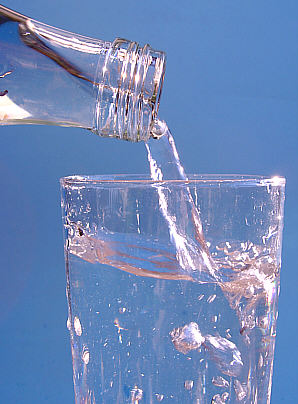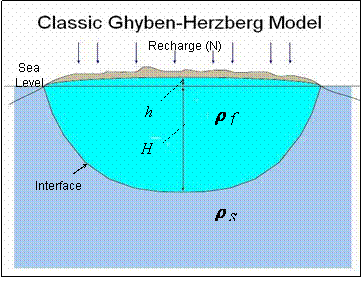Difference between revisions of "Fresh water"
Thebastidge (talk | contribs) (→Reverse Osmosis) |
|||
| Line 17: | Line 17: | ||
==Reverse Osmosis== | ==Reverse Osmosis== | ||
| − | In the boating world, reverse osmosis machines are also called "watermakers". | + | In the boating world, reverse osmosis (RO) machines are also called "watermakers". |
One manufacturer is [http://www.katadyn.com link Katadyn]. | One manufacturer is [http://www.katadyn.com link Katadyn]. | ||
| Line 26: | Line 26: | ||
Katadyn PowerSurviver 160E 7.0 gal/hr 12V@18A=216W 3yr warranty $4299 | Katadyn PowerSurviver 160E 7.0 gal/hr 12V@18A=216W 3yr warranty $4299 | ||
| + | |||
| + | Osmosis is the process of liquid mixtures of different densities equalizing their density by diffusion and mixing. Reverse osmosis is the exact opposite- one liquid becomes less dense (in the relevant example for seasteading, seawater loses salt to become freshwater while adding extra salt to the seawater "brine" effluent that is higher concentration than normal). It takes additional energy to make one liquid less dense at the expense of another liquid becoming more dense, rather then the density of the two equalizing. | ||
| + | |||
| + | Things that are important to know when designing a RO solution: | ||
| + | |||
| + | -pore size of the filtration media used to remove salt from seawater | ||
| + | -pore count per area (e.g. pores/sq cm) | ||
| + | -he pressure used to force the water through it. | ||
| + | |||
| + | These factors will determine the speed (unit volume per time unit, generally gallons or liters per hour) capacity of the RO system. | ||
==Rainwater Harvesting== | ==Rainwater Harvesting== | ||
Revision as of 21:00, 29 June 2017
- Water, water, everywhere,
- And all the boards did shrink;
- Water, water, everywhere,
- Nor any drop to drink.
Contents
Desalinization
There is an interesting article about a thermal vacuum desalination method that would be an excellent fit for a seastead. (In contrast,) Vapor compression is a relatively energy-efficient steam distillation method that's mature, available and already widely used.
"Thermo-Ionic"
Saltworks Technologies. Supposedly uses a lot less energy than other methods.
Reverse Osmosis
In the boating world, reverse osmosis (RO) machines are also called "watermakers".
One manufacturer is link Katadyn.
Katadyn PowerSurviver 40E 1.5 gal/hr 12V@4A=48W 3yr warranty $2999
Katadyn PowerSurviver 80E 3.0 gal/hr 12V@8A=96W 3yr warranty $3899
Katadyn PowerSurviver 160E 7.0 gal/hr 12V@18A=216W 3yr warranty $4299
Osmosis is the process of liquid mixtures of different densities equalizing their density by diffusion and mixing. Reverse osmosis is the exact opposite- one liquid becomes less dense (in the relevant example for seasteading, seawater loses salt to become freshwater while adding extra salt to the seawater "brine" effluent that is higher concentration than normal). It takes additional energy to make one liquid less dense at the expense of another liquid becoming more dense, rather then the density of the two equalizing.
Things that are important to know when designing a RO solution:
-pore size of the filtration media used to remove salt from seawater -pore count per area (e.g. pores/sq cm) -he pressure used to force the water through it.
These factors will determine the speed (unit volume per time unit, generally gallons or liters per hour) capacity of the RO system.
Rainwater Harvesting
Rain is responsible for depositing most of the fresh water on the planet, most of it over the ocean (see wikipedia).
If you ever lived in a tropical country, you quickly learn to espect a daily rain fall between 5 and 6 o'clock of about half an hour. And collecting rain fall is the easy. With a permeable soil, you even have nothing to do.
Post on collecting rain.
Dehumidification
Fresh water lens
Human can survive about anywhere provided there is enough fresh water. Moreover, fresh water is lighter than sea water.
So the best place to live is on top of a mass of porous materiel saturated of fresh water (like a kitchen sponge). In natural island it is known as the Ghyben-Herzberg lens.
The water may be collected from rain. If the island is large and deep enough (40 times deeper that its height), it will be naturally protected against salt water intrusion. Otherwise, some watertight barrier is needed.
Links
- Wikipedia article on desalination
- Wikipedia article on Reverse Osmosis
- Wikipedia article on Watermakers
- Wikipedia article on solar desalination
- Wikipedia article on Solar Still
- Wikipedia article on Rainwater Harvesting
- The Hurricane Tower "Fresh Water generation through simulation of natures hurricanes".
- Sea Solar Power
- Seawater Greenhouse
- Ghyben-Herzberg lens good explanation
| Support Infrastructure |
|---|
| Fresh water · Food · Farming · Waste Disposal · Shelter · Appliances · Communications · Transportation · Medical and Health Care · Infrastructure Example |
| Socio-Economic, Political, and Legal |
|---|
| Legal · Defense · Money |

